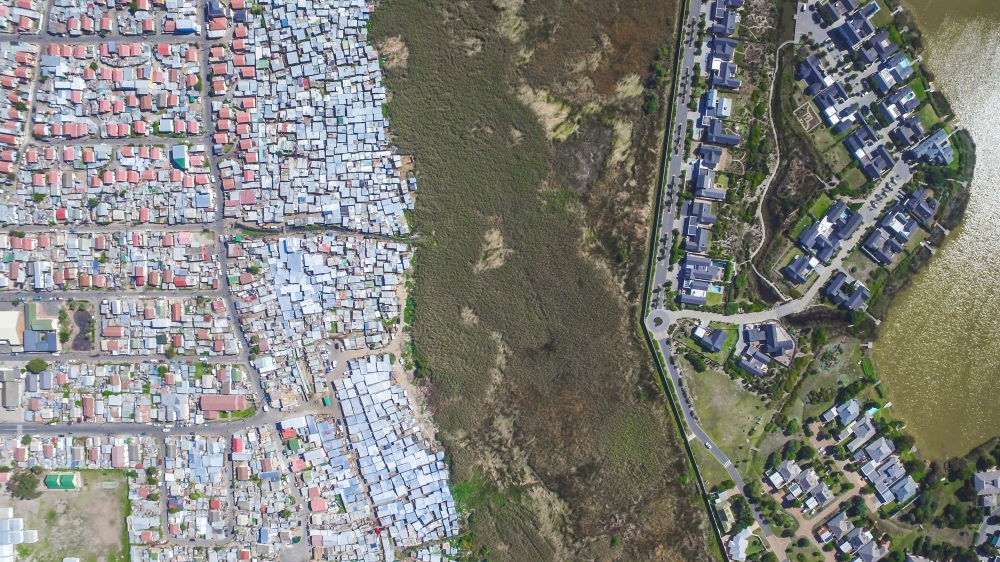Abu Dhabi, UAE
Thomson Reuters Foundation
In South Africa’s Cape Town, an aerial photograph shows vast villas interspersed with lush greenery, blue swimming pools and the odd tennis court, while on the other side of the road, hundreds of tin-roof shacks tell a different story.
The image is one of a series shot by drone in the world’s biggest slums by Cape Town-based photographer Johnny Miller, on show at the UN World Urban Forum in Abu Dhabi this week.
“It’s easy to ignore inequalities when you can’t really see them,” Miller told the Thomson Reuters Foundation at the conference.
“People don’t pay attention to the things they see every day, so we need a visual culture that breaks that mechanism and gets people to notice, then take action,” he added.

An aerial image of Lake Michelle/Masiphumelele in Cape Town, South Africa in 2016. PICTURE: Courtesy of Johnny Miller
From segregated housing to green spaces and other infrastructure that favours the rich, art and technology can help map some of cities’ most entrenched inequalities, said artists, researchers and officials at the UN-Habitat event.
South Africa’s cities remain for the most part racially divided more than 20 years after the end of apartheid, under which millions of black people were forcibly removed from white-only urban areas to live in crowded townships and designated rural “homelands”, with the two sides separated by buffer zones.
That legacy of spatial planning makes it even more difficult “to get the public to realise what has always been around them”, said Pam Tshwete, South Africa’s deputy minister of human settlements, water and sanitation.
“If something has existed around you for years, you may be less likely to question or challenge it,” she added.
Other types of inequality such as emerging “climate gentrification” also have roots in longstanding social differences, said Michael Berkowitz, a founding principal of Resilient Cities Catalyst, a non-profit consultancy.
“In New Orleans, historically rich neighbourhoods are the ones that never flood because they were built on higher ground, and that goes back hundreds of years,” he explained.
Climate change pressures like rising sea levels and warming temperatures increase the value of green spaces in cities, which then become less affordable to the poorest, the former head of the 100 Resilient Cities network said on Monday.
“Show me where the greenery is and I can show you where the rich neighbourhoods are,” Berkowitz said.
Art can be a powerful tool to raise awareness of – and ultimately build resilience to – growing threats, he added. “It helps to talk about things that people struggle to put words on,” he said.
But art and technology tools like satellite imagery that map inequality must be accessible to all rather than just a “group of insiders”, said Neila Akrimi, head of the Centre for Innovative Local Governance, a Tunisia-based development consulting firm.
“Otherwise, even with the best will in the world, we will end up creating new inequalities,” she said.






